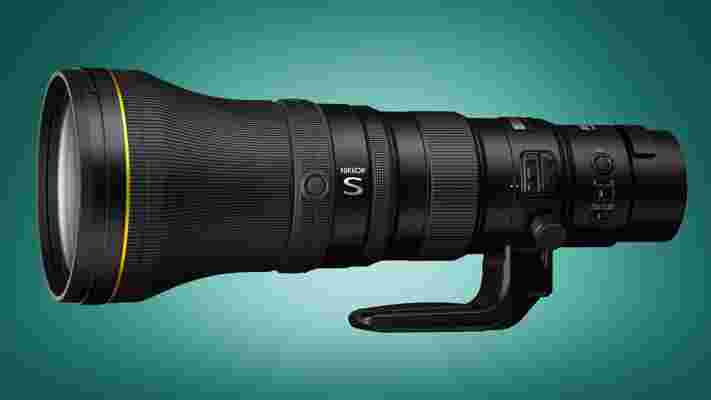
Audi will offer you an in-car VR movie and gaming experience later this year
by
Tomasz David
Audi has announced its holoride feature, an in-car virtual reality system meant for gaming, movies, and more.
In-car technology is reaching new heights in 2022. Infotainment systems and safety equipment are becoming more advanced by the day, and automakers are putting the features to use in exciting ways.
Starting in June 2022, passengers will be able to use HTC's Vive Flow virtual reality glasses (or any other Bluetooth VR headset that's been Holoride given support - devices TBC) to view games, films, and other content. Owners of MIB 3-equipped Audi models can take advantage of the service:
Audi says the technology will be able to adapt custom virtual content "to the car's driving movements in real-time: For example, if the car is taking a right turn, the spaceship in the imaginary world will also fly to the right. If the car accelerates, the spaceship speeds up too."
Holoride is being launched first in the United States and Europe (starting with Germany and the United Kingdom). Other countries in Europe would be added in 2023 and Audi has said it will expand to Asian markets in the future too.

Trying to make sense of the future
Audi first unveiled holoride at the Consumer Electronics Show (CES) in 2019 and teamed up with Disney on a Marvel Universe VR in-car experience.
In 2021, the automaker toured California game studios to show off the technologies, and later that year, at IAA 2021 in Munich, attendees could take demo rides in an Audi e-tron .
While holoride will initially be reserved for back-seat passengers, Audi sees a world where the tech plays a role in autonomous vehicles. Without a need to drive the car, the driver and passengers will be able to learn, work, and play games on the go with the technology.
While an in-car virtual reality system with glasses and video games may sound a little "out there" on the surface, it's important to note that we'll likely see other creative approaches to provide infotainment services in cars.

Self-driving cars aren't a thing yet, but we're clearly headed in that direction, so automakers are scrambling to make sense of that future and what it means for their products and customers. Audi's vision is one of immersive content and entertainment, but another automaker might come up with a different answer to the question.
There's really no downside for buyers and owners here, either, as holoride will be available for most Audi models. Audi's customers get advanced entertainment tech to coddle back-seat passengers and Audi gets a real-world proving ground for its new tech.
It's unclear how or if the technology could be used in driver assist or safety tech, so there's a possibility Audi adds new features over time.
There's also no word yet on how much the Holoride upgrade will cost, but it's probably not going to come cheap. Plus, the HTC Vive Flow VR headset which features in Audi promotional photography (as seen above) costing $499 / £499 (around AU$675) alone.
Google is working to highlight the existing privacy control feature in its popular Chrome browser this week with the release of a new step-by-step guide to the browser's privacy settings.
"Developed at the Google Safety Engineering Center (GSEC) , Privacy Guide is a step-by-step guided tour of some existing privacy and security controls in Chrome — so you can manage and make the right privacy selections for you in one spot," Audrey An, Google's Product Manager for Chrome, said in a statement.
Google introduced several new privacy control features to Chrome back in May 2020 to help users manage cookies, website permissions, and more. These features, however, are contained in a settings menu that many users might not even know exists.

Providing a user-friendly walkthrough of Chrome's settings will hopefully let more users better control what information they are willing to share and with whom.
"When you navigate through Privacy Guide, you’ll learn about the benefits, trade-offs and privacy implications of each setting — so you can easily understand what happens when a particular one is on or off," An said.
"Currently, Privacy Guide includes controls for cookies, history sync, Safe Browsing, and Make Searches and Browsing Better. As Chrome evolves and we receive feedback from the community, we may add more settings to the guide over time."
Analysis: useful privacy controls, or a regulatory heatshield?
Anything that helps users control what information about them gets shared on the internet is definitely a good thing. But that still puts the onus on the user, which isn't ideal.
Google has come under a lot of scrutiny in recent years for its privacy and data collection practices, so this should be viewed in light of that criticism. On the one hand, Privacy Guide could be a sign that Google is listening to its critics and actually doing more to protect user data and privacy.
That is definitely the more generous perspective. The less generous take would be that Privacy Control may be another one of those things that get announced but soon lost in the news cycle, meaning users barely learn about it, and so never use it.
That is something Google has control over. If Google wants you to use a new feature in Gmail or Google Docs that will make it money, it will happily promote its use very prominently (because it obviously benefits the company for you to use their new feature).
If this is the last time we hear from Google about Privacy Control until it's later deployed during a Congressional hearing as evidence that Google has taken privacy concerns seriously and so shouldn't be regulated, then it's worth asking what the actual purpose of this new guide really is.
In the world of online privacy and Big Tech, there are plenty of reasons to be cynical. For our part, we'd really like to be pleasantly surprised. We really, really would.
Nikon and Canon's telephoto fencing match has been getting ever more feisty, and now Nikon has landed a strong attack with its impressively portable new 800mm prime lens for mirrorless cameras.
The Nikon Z 800mm f/6.3 VR S is, naturally, still pretty large and pricey, given it's a pro-level wildlife lens. But its design and marginally slower maximum aperture, compared to its Canon RF 800mm f/5.6L IS USM rival, means it's only 385mm long and weighs in at 2.385kg. That makes its 5cm shorter than its Canon equivalent and 755g lighter.
The most noticeable difference, though, is between the two lenses' price tags. The Nikon Z 800mm f/6.3 VR S will cost $6,499 / £6,299 / AU$10,499 when it goes on sale later this month. That isn't exactly an impulse buy, but it is significantly less than the $16,999 / £19,099 / AU$28,999 tag on Canon's RF 800mm f/5.6L lens.
The main reason why Nikon's been able to shave off some significant weight from this lens' F-mount predecessor is down to its 'Phrase Fresnel' (PF) element. This design, which can also be found in some Canon telephoto lenses and in lighthouses, has ridges cut into its rear side. The dual benefit is a reduction of issues like chromatic aberration and a relatively lightweight design.
Unlike larger telephoto lenses, this means wildlife and sports snappers should be able to use the Nikon Z 800mm f/6.3 VR S handheld for periods, rather than leaving it permanently mounted on a tripod or monopod. Nikon also claims that putting its center of gravity closer to the camera body makes it easier to taking panning shots.
As you'd expect from a pro-level S Line lens, Nikon's new 800mm is fully weather-sealed and has 5.5 stops of compensation if you pair it with a camera like the Nikon Z9. If you need even more reach, it's also compatible with Nikon's Z teleconverters to take the focal length up to 1120mm or 1600mm.
Despite stock shortages for mirrorless cameras and lenses, Nikon is confident that the Nikon Z 800mm f/6.3 VR S will be available to buy later this month for that $6,499 / £6,299 / AU$10,499 price tag. Expect pro wildlife and sports photographers to snap them up pretty quickly.
Analysis: Just like old times

The camera giants may be facing the twin issues of declining demand and supply chain problems in mid-range cameras , but it's business as usual at the professional end – with Nikon and Canon duking it out for the hearts and wallets of pro snappers.
This new Nikon Z 800mm f/6.3 VR S might still be pricey and relatively niche, but it's a significant launch for wildlife and sports snappers. Not only does it represent the tech advances of mirrorless cameras, being 2.3kg lighter and 16% shorter than its F-mount counterpart for DSLRs, it significantly undercuts the price tag of its Canon rival.
The Canon RF 800mm f/5.6L IS USM, which is currently out of stock in most regions, will still likely offer performance advantages (including that brighter maximum aperture) that go some way to justifying its higher price tag. But the size of the price gap could help sway well-heeled hobbyists and professionals towards Nikon's mirrorless system, particularly given how impressive the flagship Nikon Z9 is.
If that turns out to be the case, it'd be an impressive turnaround for Nikon, which until recently was looking rather left behind in the pro mirrorless space in comparison to Sony and Nikon.
Leave a Comment